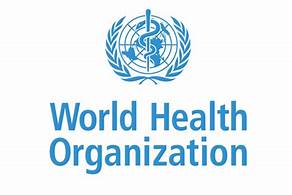According to the World Health Organization, Sanitation refers to the provision of facilities and services for the safe management of human excreta from the toilet to containment and storage and treatment onsite or conveyance, treatment, and eventual safe end-use or disposal. More broadly sanitation also included the safe management of solid waste and animal waste. Inadequate sanitation is a major cause of infectious diseases such as cholera, typhoid and dysentery world-wide. It also contributes to stunting and impaired cognitive function and impacts on well-being through school attendance, anxiety and safety with lifelong consequences, especially for women and girls.
Improving sanitation in households, health facilities and schools underpins progress on a wide range of health and economic development issues including universal health coverage and combatting antimicrobial resistance. The new WHO Guidelines on Sanitation and Health summarize the evidence on the effectiveness of a range of sanitation interventions and provide a comprehensive framework for health-protecting sanitation, covering policy and governance measures, implementation of sanitation technologies, systems, and behavioral interventions, risk-based management, and monitoring approaches.
Critically, the guidelines articulate the role of the health sector in maximizing the health impact of sanitation interventions. The guidelines also identify gaps in the evidence base to guide future research efforts to improve the effectiveness of sanitation interventions. See: The 7 Types Of Sanitation
What is good sanitation?
Sanitation is the effective use of tools and actions that keep our environment healthy. These include latrines or toilets to manage waste, food preparation, washing stations, effective drainage, and other such mechanisms.
What are Sanitation systems?
Sanitation systems are a combination of different functional units that together allow managing and reusing or disposing the different waste flows from households, institutions, agriculture, or industries in order to protect people and the environment. The systems are designed to address the whole water as well as the nutrients cycle, from the toilet user where wastewater is generated, over the collection, treatment up to reuse or discharge. In order that sanitation systems function reliably, the technical know-how for the installation of functional units as well as their management, operation, and maintenance must be guaranteed. Conventional sanitation systems generally refer to large sewer systems with centralized high-tech treatment stations. These systems may be efficient and have significantly contributed to improving the health of people and to lower environmental burden of wastewater discharge during the past decades. However, they require huge amounts of water, which is mixed with excreta and wastes, resulting in large volumes of highly polluted wastewaters.
Centralized treatment stations for these slurries not only involve large costs for construction and operation, consume energy and chemicals, and have great management requirements, but also are the nutrients lost to the air or finally disposed of in landfills. Conventional wastewater treatment systems have a large potential to be optimized and to be made more sustainable by reducing the use of water (e.g. dry systems) and improving the recovery and reuse of nutrients and energy.
There are many ways to improve conventional sanitation systems in order to reduce the use of water or to efficiently recycle the generated wastewater and nutrients on any level. See: Importance Of Sanitation






